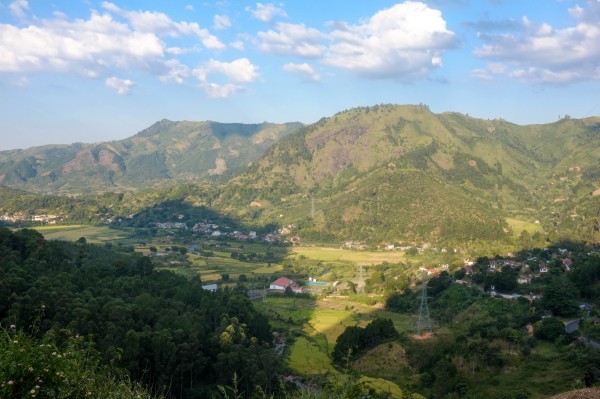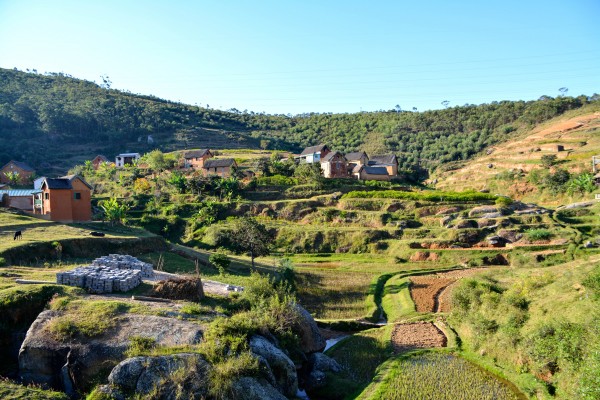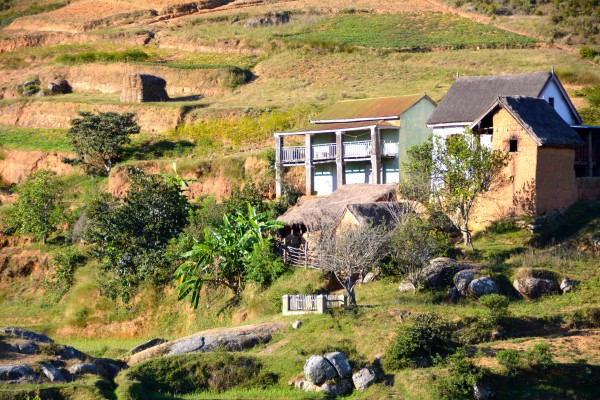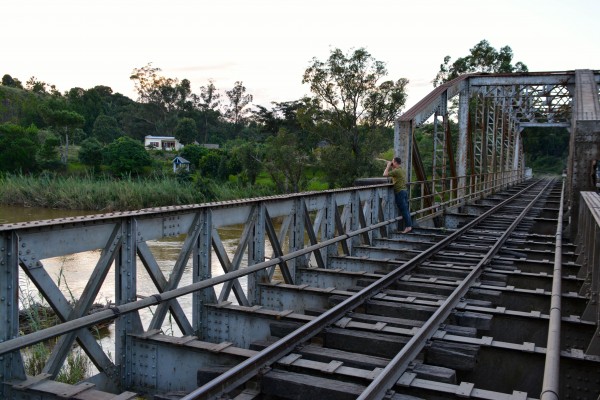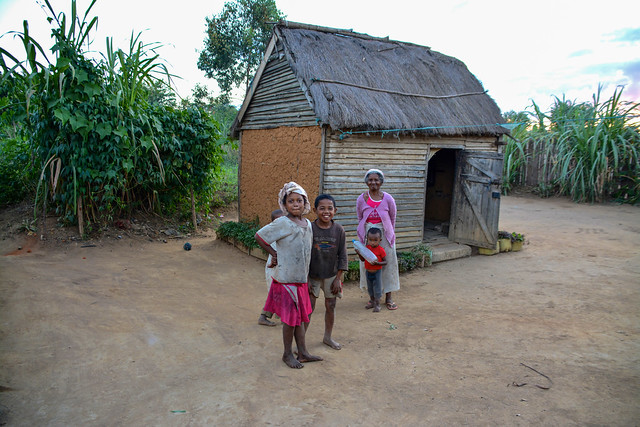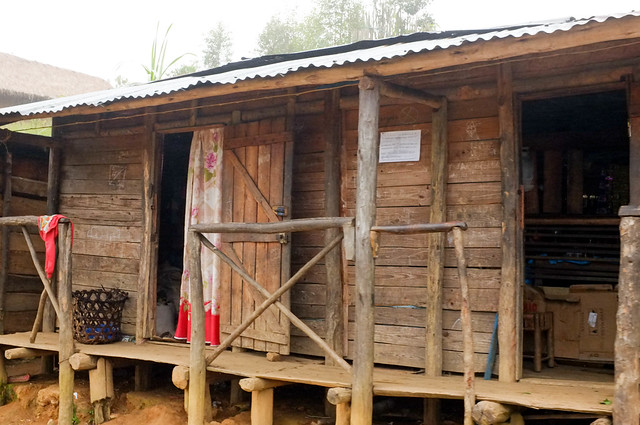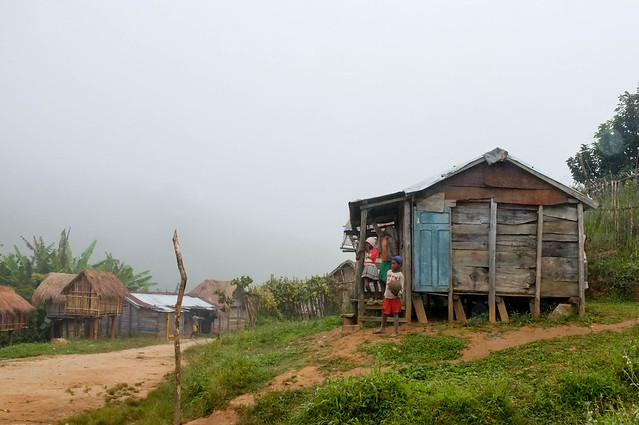So it was our first “real” weekend (i.e. the first during which we were not stumbling around in a jet-lagged haze) and we decided to head out of town. We decided to return to a destination we had visited on our vacation trip in 2012, and a place many visitors to the country go and see – the Andasibe – Mantadia National Park area, about 150km from Antananarivo. In short, it was a wonderful trip, with hundreds and hundreds of photos we’d like to share (and this in spite of having brought only my Fuji X100, which has no zoom – but Anne made up for me) and we don’t even know where to begin. So I thought I’d just start with the drive down there.
(next 3 photos by Anne)
Antananarivo (“Tana”) being in the central highlands, we headed east through rolling hills with beautiful panoramic views. The driver we had hired pulled over where we took these pictures and explained how the locals use materials found in nature to build their homes – i.e. thatch roofs and mud bricks – and pointed out that people build a cooking fire inside the home (upstairs, see the soot above the window in the bottom photo) to make use of the heat that’s generated.
So as we were driving along the sun was setting and we passed over this river and I had the driver turn around because the whole thing was lit up orange – by the time he got back the effect had just passed.
 A bit farther down the road, I saw there was a pretty good valley view of the sunset and I asked the driver to quickly pull over. In my bare feet, I climbed on top of the SUV’s roof rack and snapped a couple of photos:
A bit farther down the road, I saw there was a pretty good valley view of the sunset and I asked the driver to quickly pull over. In my bare feet, I climbed on top of the SUV’s roof rack and snapped a couple of photos:
So this was actually a tiny roadside village – 6-8 small huts with some vegetables growing out back, and the villagers were amused to see a foreigner – a “vazaha” (which literally means “white person” but is used to mean outsiders, which have tended to be white…) standing on top of his car taking pictures.
With hand gestures I asked if I could enter the village to get a better shot.
As we drove away, the driver said, “They liked you – you are like from the country,” referring to my shoelessness.
We would arrive at the park after dark, and over the next few days I shot a few more pictures of homes located around the outskirts of the park. Few people have electricity, and drying clothing on the grass is common even in the capital, Antananarivo – but I was struck by how they had used found or repurposed materials to build their homes.
Some sobering statistics on Madagascar. Something like 80% of the living things that are on the island occur nowhere else in the world. This includes the 103 or so species of lemurs, its most famous creature – but also some 400 species of frogs, for example. 11,000 plant species – 165 of Madagascar’s 170 palm species occur nowhere else. Six of the world’s 8 baobab species. Time is running out to save many of these species. But then you have poverty – 92% of the people of Madagascar, known as the Malagasy, live on less than two dollars a day.
During the coup regime between 2009 and 2013, nearly all foreign aid was cut off – which at the time represented 70% of Madagascar’s income. We could clearly see conditions have improved from 2012, our last visit, and today. But to me the people, struggling to make it day-to-day, living along the fringes of these marginally protected National Parks containing such a treasure trove of biodiversity, are somehow symbolic of the challenge Madagascar faces. There needs to be a way to make saving Madagascar’s natural wonders and eliminating the poverty of its people, part of a single solution.
To be continued…

